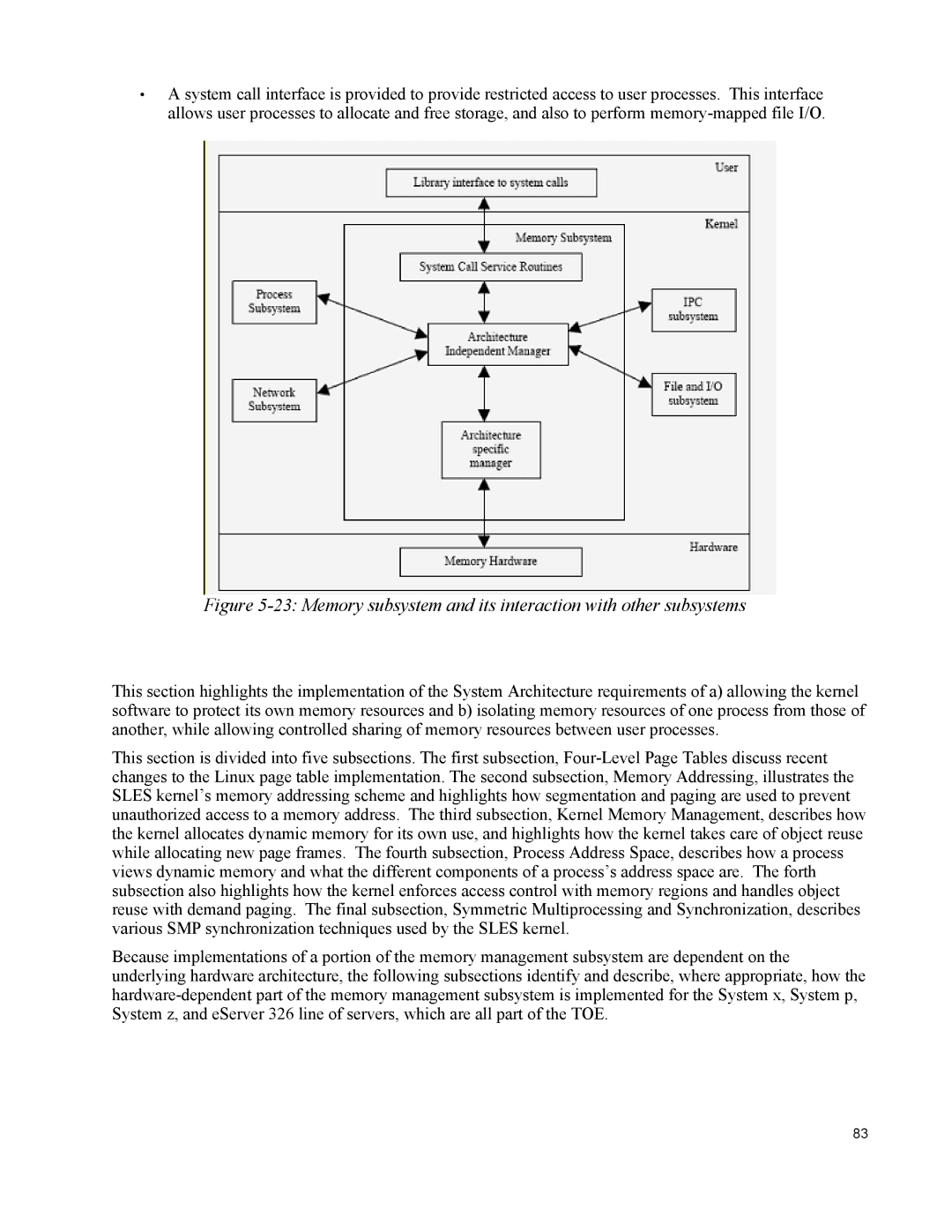
•A system call interface is provided to provide restricted access to user processes. This interface allows user processes to allocate and free storage, and also to perform
Figure 5-23: Memory subsystem and its interaction with other subsystems
This section highlights the implementation of the System Architecture requirements of a) allowing the kernel software to protect its own memory resources and b) isolating memory resources of one process from those of another, while allowing controlled sharing of memory resources between user processes.
This section is divided into five subsections. The first subsection,
Because implementations of a portion of the memory management subsystem are dependent on the underlying hardware architecture, the following subsections identify and describe, where appropriate, how the
83
